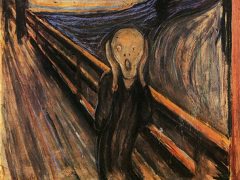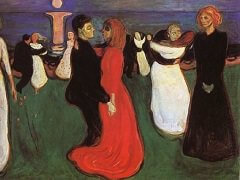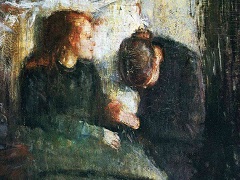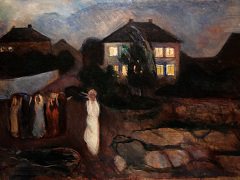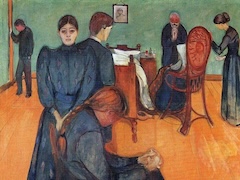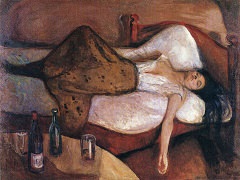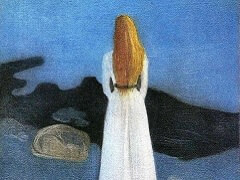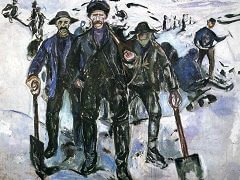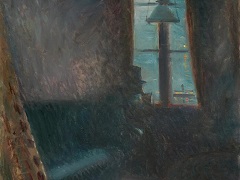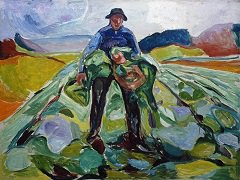White Night, 1901 by Edvard Munch
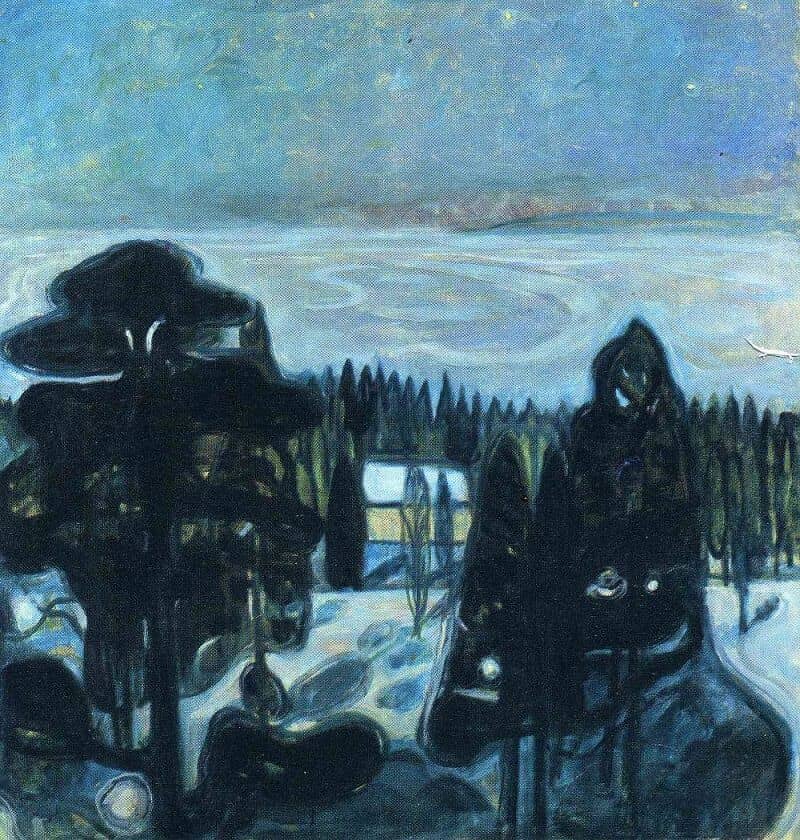
While staying at Oslo, Munch painted a number of landscapes of which this is a typical example. Though employed to very different effect, the style resembles the flat, flowing oeuvre simplification of Dance on the Shore. By choosing a downward line of sight from a high eye level on sloping ground Munch is able to look over the tops of the trees and show a great expanse of the frozen fjord beyond. The saw-tooth contour of the spruce forest in the middle ground suggests the hardness and thickness of the ice; in the dead of winter the sea cannot serve as a medium for a vitalizing solar force, and the landscape is lit by an unseen moon on the left behind the spectator. The little house in the forest has no windows. At the bottom left lies a dead log of wood presenting a cut face coated with snow, symbolically related to cut tree-stumps in Fertility. Yet life is not extinct. The idiomatic contours of the pines and spruces in the foreground make these trees into individuals, their loosened, multiplied contours give them the elasticity of living beings, and where there are gaps in the foliage the spots of snow and ice seen through them look like the eyes of strange faces.
Like The Starry Night Over The Rhone by Vincent van Gogh, Munch's works at times seems to endow his nocturnal landscapes with animistic qualities.

